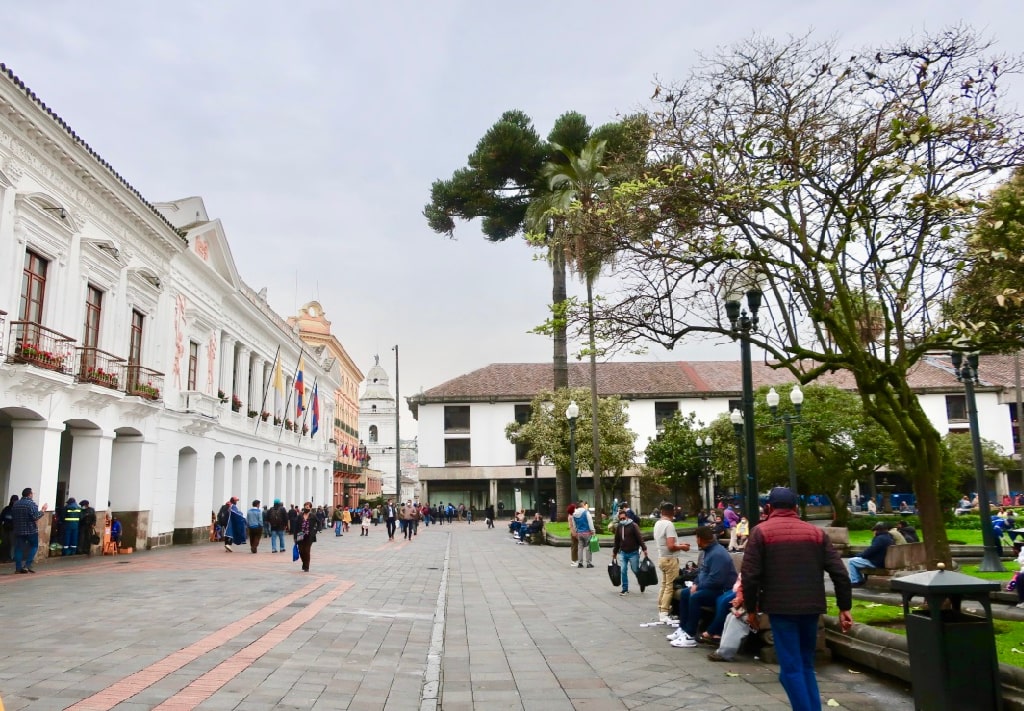Quito has become a popular first taste of Latin America for visitors traveling to the Galápagos Islands (around 650 miles – a two-hour offshore flight).
If you are heading to the Galapagos, you probably have a day – or less – to explore this high-elevation, equatorial city. (In fact, Ecuador was named for its mid-Earth location). So, it behooves you to have a game plan for visiting Quito. We give you one; scroll down for our list of the best things to do in Quito.
Where Is Quito?
Quito, the capital of Ecuador, is located in the northern part of the country in the Andean highlands. Situated at an elevation of approximately 2,850 meters (9,350 feet) above sea level, nearly twice as high as the Mile High City of Denver, it is the second-highest official capital city in the world.
Travel Tip: When you arrive, drink a lot of water and have pain relievers handy for headaches. And don’t push yourself.
As a gateway to other regions of Ecuador and the Galápagos Islands, Quito serves as a major hub for travelers. The city is renowned for its well-preserved historical center, which was one of the first places to be declared a UNESCO World Heritage Site. The city is cradled by the Pichincha Volcano to the west, providing a dramatic natural backdrop. Quito is a compelling destination with a blend of colonial architecture, vibrant markets, and modern amenities.
Hire a Guide for Quito
For those with limited time, the most efficient – and delicious – way to explore Quito is with a knowledgeable guide. We used Juan Carlos Guerra (jcneotropics@gmail.com), who came highly recommended by travel agents in the know. Juan Carlos is not only a historian, birder, and naturalist – he’s a former chef. So, attention, foodies! JC seemed to know everyone in the local markets, including…..a shaman!
Best Things to Do in Quito, Ecuador
Exploring the Heart of the Capital: Historical Center
Plaza Grande
Also known as Plaza de la Independencia, this square is the core of the city’s historical center. Walk around, absorb the atmosphere, and don’t miss the Presidential Palace overlooking the square.
La Ronda
Take a stroll down this cobblestone street in the historical center. It’s well-known for its colonial houses, artisan shops, and traditional Ecuadorian food.
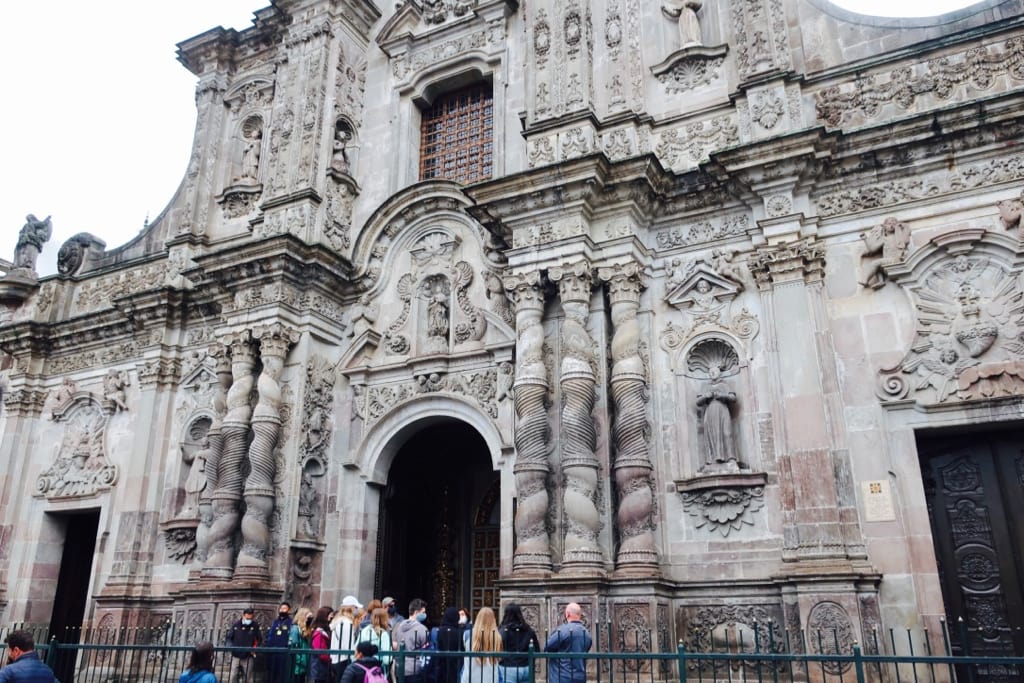
Sacred Sites and Architecture
Church of La Compañía
Stop into the most dramatic of all churches here: the “Gold Church.” Although you’re not allowed to take photos inside, its exterior provides an idea of what’s to come. Intricately carved fluted columns and a frenzied rococo design, the façade is a wild whirlwind of religious icons. Inside – much more of the same – but in gleaming gold.
Basilica del Voto Nacional
As one of the largest neo-Gothic cathedrals in South America, a visit here is a must. Climb to the top for magnificent views of the city.
Statue of the Virgin Mary
Head to El Panecillo Hill to see the impressive Virgin Mary statue. The largest aluminum representation of a winged Virgin Mary in the world sits on a hill above central Quito. Completed in 1975, she stands 135 ft. from base to crown and is visible almost anywhere in the city. This landmark is one of Quito’s top attractions and offers a panoramic perspective of the city.
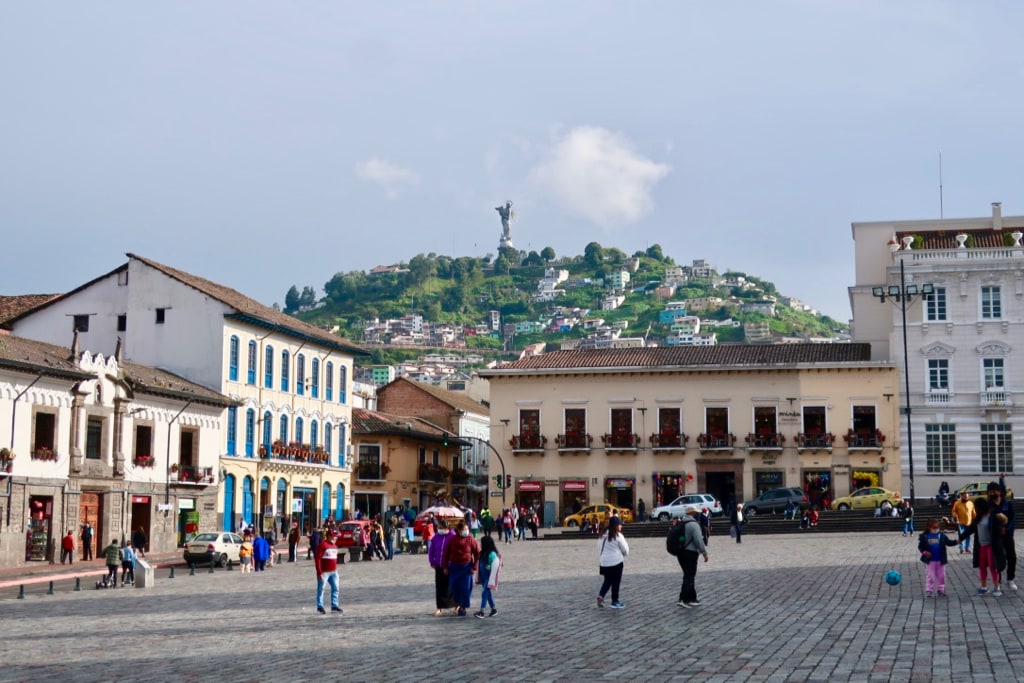
Nature and Outdoor Activities
Cloud Forest
Venture just outside Ecuador’s capital to explore the cloud forest’s unique ecosystem. Bird-watching and hiking trails abound in this lush, fog-drenched environment.
Pichincha Volcano
Take the cable cars, known locally as “teleférico,” to get up close to this active stratovolcano. The ride up provides excellent views of the city of Quito, and once you’re at the top, you can hike or simply enjoy the view.
Cotopaxi National Park
Though a bit of a drive from your stay in Quito, it’s well worth the trip. Hike up the Cotopaxi volcano or explore the park’s diverse flora and fauna.
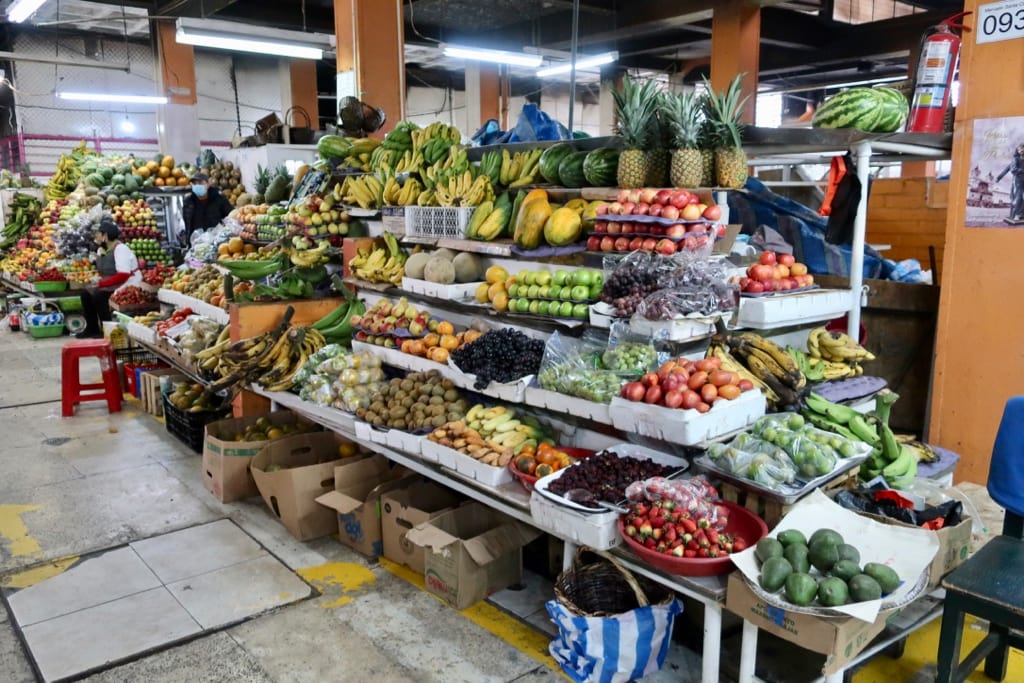
Local Foods and Markets
Santa Clara Market
This enclosed food and flower market bustles with locals. So, for those looking for a cultural immersion, this should be stop #1. If you don’t have a guide, it’s important that you, or someone in your group, speak Spanish. Vendors don’t typically speak English.
Ecuador is known for its variety of tropical fruit and fruit juices, so plan to taste some here.
There’s a woman who only sells potatoes – and is known for her swift peeling skills. Another vendor dishes out fried fish and fried plantains – a bargain lunch for only $3.50.
Everything is large and in abundance here. You’ll find massive pork rinds, unbelievably huge vegetables, fruits, and flowers. The Rainbow Roses (created by soaking split stems in a kaleidoscope of dyes) are astonishing in their vivid hues.
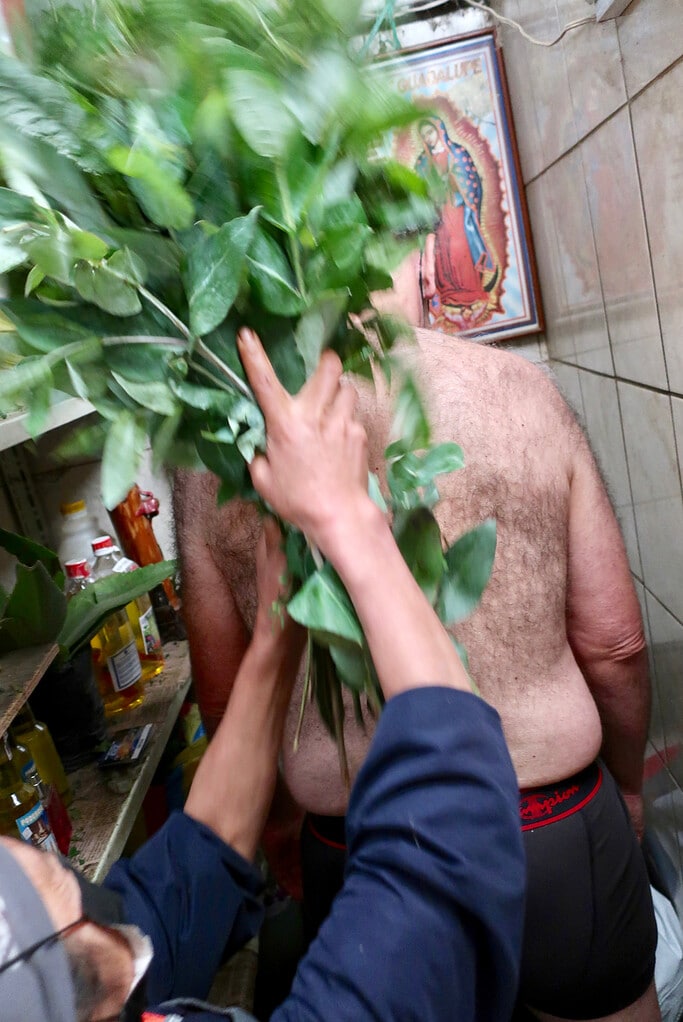
One feature of this market that you’ll never find in those stateside is a resident “healer” – or Shaman. In this case, the 4’ 11” tall Carmen. Grabbing a bouquet of plants from her market stand (in the Natural Medicine section), she leads you to her “office.”
Carmen’s patients and adventurous tourists wait outside three teeny rooms in which they strip to underwear so she can whip their chakras into balance. Perhaps this isn’t among the best things to do in Quito, Ecuador, for many, but it may be the quirkiest. A mere $5 for five minutes.
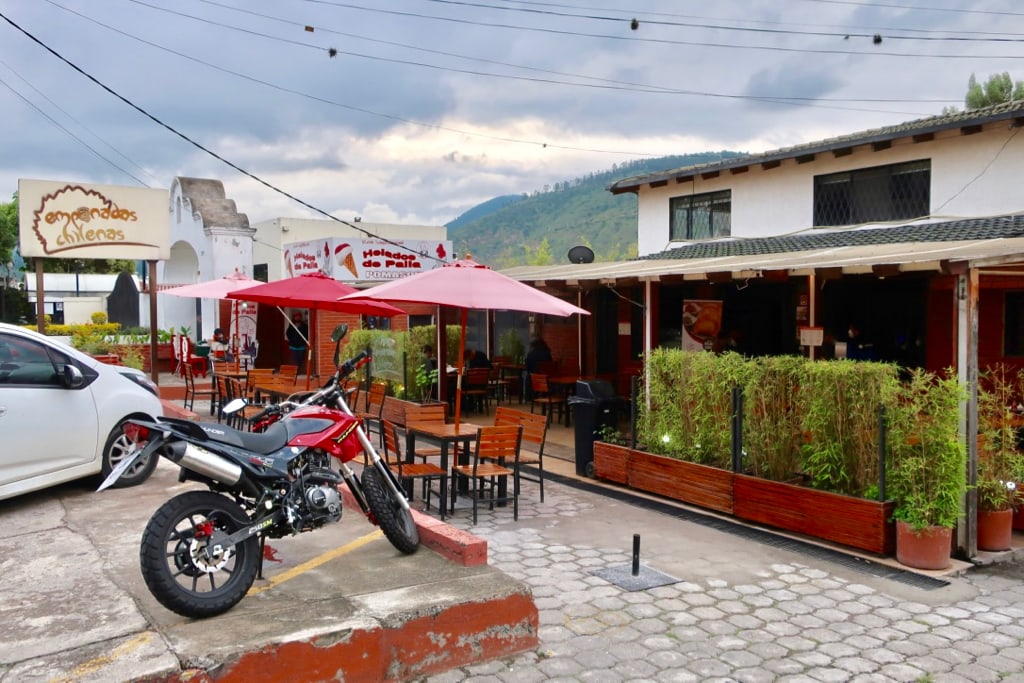
Empanadas Chilenas
Juan Carlos is partial to these fried cheese and meat empanadas; now, we are, too. More a roadside stand (next door to an ice cream shack) it is obviously a hit with locals, too, as evidenced by the “Uber Eats” sign above the order counter. These toothsome half-moons of deliciousness make for a perfect afternoon snack or early dinner. At $1.50 per large empanada, it’s a steal.
Nightlife and Social Spaces
Plaza Foch
Known as the center for nightlife in Quito, this square is filled with bars, restaurants, and cafés. It’s a great place to experience the city’s modern side.
Panoramic Views
Itchimbía Park
For those visiting Qito who are interested in capturing expansive views of the city, this park offers scenic overlooks and walking paths.
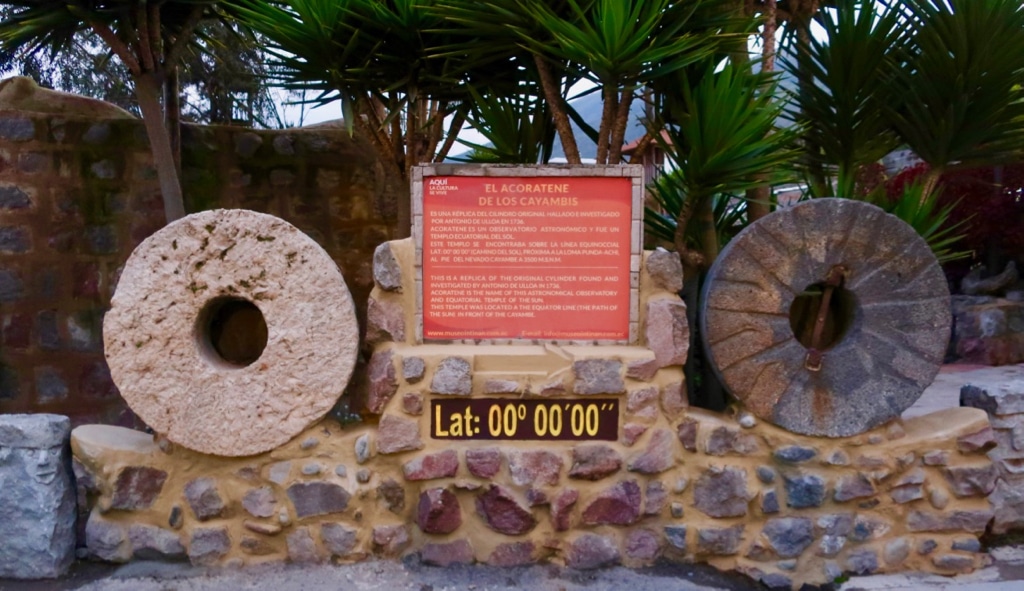
Unique Experiences
Intiñan Museum Equator Monument
While not in Quito proper, a trip to the “Mitad del Mundo” is within easy reach and offers a quirky experience of standing in both the Northern and Southern Hemispheres at the same time. Once believed to be the middle of Mother Earth – the equatorial line; however, newer technology determined that the monument’s placement was off by about 100 yards. The Equator line actually lays across private property.
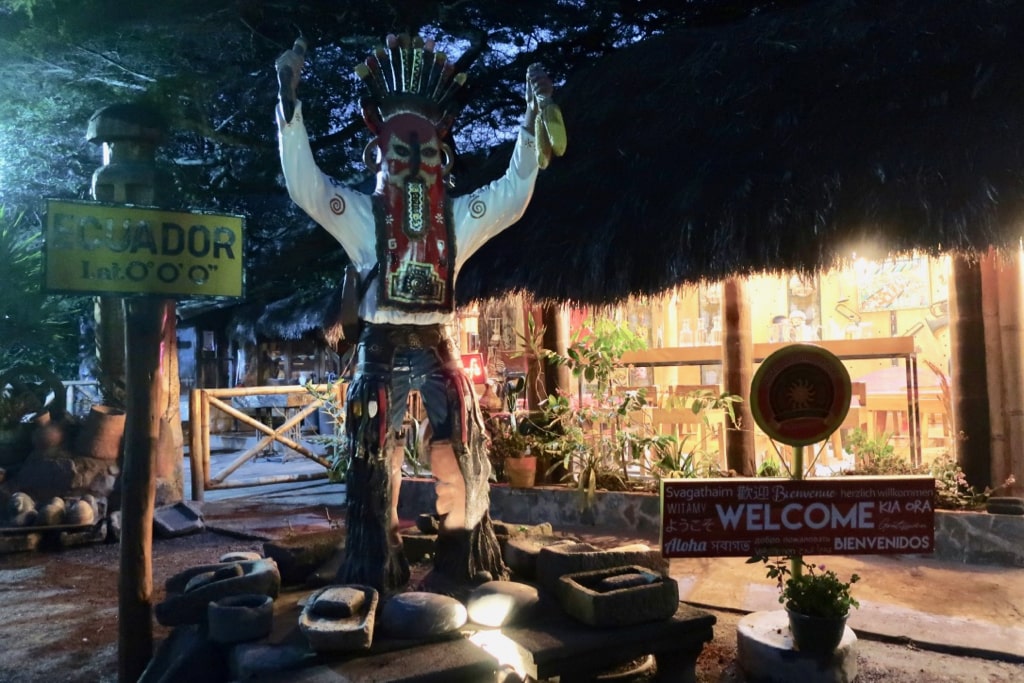
So, what’s an entrepreneurial family to do? Open a museum, of course. This one, a somewhat kitschy Florida-roadside-attraction-ish tourist trap, has one hell of a central feature: A painted line on which you can straddle Earth’s Northern and Southern hemispheres.
(While the Equator runs through Brazil, Columbia, Africa, and Asia, most of the line spans the Atlantic, Indian, and Pacific Oceans. No other country features an equatorial line attraction).
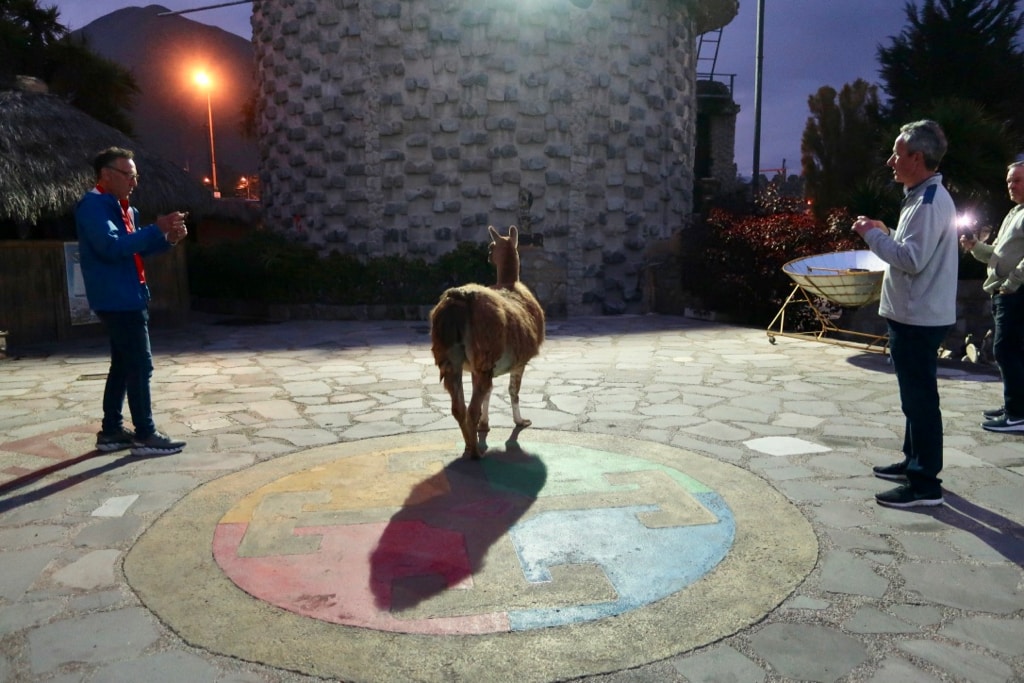
The sprawling Intiñan Museum is replete with oddities: shrunken heads, taxidermied animals, and other indigenous artifacts. There’s also a lone, carrot-loving lama, a chocolate-tasting program, and a place to grab a wine or beer. But, of course, the piece de resistance is that painted line.
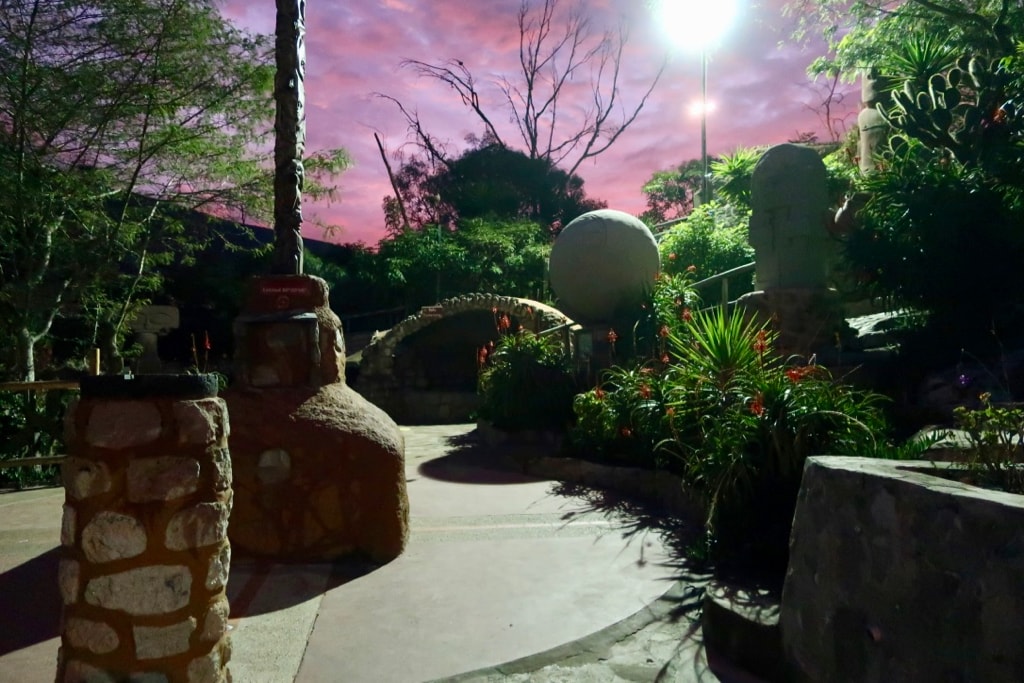
I have to admit, at night, when the museum was open for us (Juan Carlos knew the owners), the place seemed otherworldly.
Though debunked, the interactive activities on and around the equatorial line were lots of fun. These included watching water drain in opposite directions in each hemisphere and balancing a raw egg on a nail-head. (Guides have since called these promotional stunts “representations” and not accurate depictions of what happens so close to the equator).

